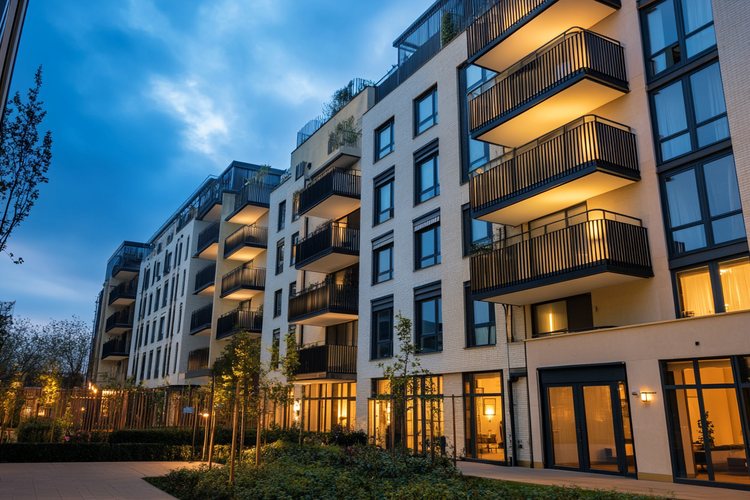Micro-Apartments: The Next Big Thing in Urban Real Estate
Introduction: As urban populations soar and housing costs skyrocket, a new trend is reshaping city skylines and redefining what it means to live small. Micro-apartments, typically under 400 square feet, are becoming increasingly popular in major metropolitan areas. This innovative housing solution is not just a fad but a response to changing demographics, evolving lifestyle preferences, and the pressing need for affordable urban living options.

The driving forces behind this trend are multifaceted. Urbanization continues at a rapid pace, with the United Nations projecting that 68% of the world’s population will live in urban areas by 2050. This influx of people into cities has created a housing crunch, driving up prices and forcing many to seek alternative living arrangements. Micro-apartments offer a solution by providing affordable housing options in prime locations.
Demographic Shifts and Changing Preferences
The appeal of micro-apartments extends beyond mere affordability. Demographic shifts play a significant role in their rising popularity. Millennials and Gen Z, who make up a large portion of the urban workforce, often prioritize experiences over possessions. They’re willing to sacrifice space for location, preferring to live in vibrant city centers close to work, entertainment, and amenities.
Moreover, the rise of the gig economy and remote work has changed how people use their living spaces. For many, home is no longer just a place to sleep but also a workspace. Micro-apartments cater to this lifestyle by offering efficient designs that can easily transition from living room to office to bedroom.
Design Innovations in Micro-Living
The success of micro-apartments hinges on innovative design solutions that make small spaces feel larger and more functional. Architects and interior designers are pushing the boundaries of creativity to maximize every square inch. Foldable furniture, murphy beds, and multi-purpose fixtures are staples in these compact homes.
One popular design trend is the incorporation of modular elements. These allow residents to reconfigure their space based on their needs at different times of the day. For example, a dining table might fold into the wall to make room for a yoga mat or workspace. Some micro-apartments feature movable walls that can create separate rooms when needed or open up for a more spacious feel.
Smart home technology also plays a crucial role in enhancing the micro-living experience. Voice-activated systems can control lighting, temperature, and even furniture movements, making these small spaces feel more luxurious and high-tech.
Economic Implications for Real Estate Investors
From an investment perspective, micro-apartments present an intriguing opportunity. While the per-square-foot cost of these units is often higher than traditional apartments, they can yield better returns due to their efficient use of space and higher occupancy rates.
In many cities, zoning laws and building codes are being updated to accommodate this new housing type, opening up opportunities for developers. Some investors are converting older buildings into micro-apartment complexes, capitalizing on existing structures in prime locations.
However, the micro-apartment market is not without risks. The long-term demand for these units remains uncertain, particularly as life circumstances change for young renters. There’s also the question of resale value, as the pool of potential buyers for such specialized properties may be limited.
Challenges and Criticisms
Despite their growing popularity, micro-apartments face several challenges and criticisms. One major concern is the potential for these units to lead to overcrowding and substandard living conditions if not properly regulated. Critics argue that developers might prioritize profit over livability, creating modern-day tenements.
There are also psychological considerations. While some thrive in compact spaces, others may find the lack of space stressful or claustrophobic. Long-term effects of living in such small quarters are still being studied, with concerns about mental health and social interaction.
Zoning laws in many cities are still catching up to this trend, creating regulatory hurdles for developers. Some communities resist micro-apartment developments, fearing they will change neighborhood character or strain local infrastructure.
The Future of Urban Living
As cities continue to grapple with housing shortages and affordability issues, micro-apartments are likely to play an increasingly important role in urban real estate markets. Their success will depend on striking a balance between efficiency, affordability, and livability.
Looking ahead, we may see further innovations in this space. Some developers are exploring communal living models where micro-apartment residents share larger common spaces for socializing and working. Others are integrating micro-units into mixed-use developments, creating self-contained communities with retail, office, and living spaces all in one complex.
The micro-apartment trend also aligns with growing environmental concerns. Smaller living spaces generally have a lower carbon footprint, using less energy for heating, cooling, and lighting. As sustainability becomes a more pressing issue, this aspect of micro-living may become an even stronger selling point.
In conclusion, micro-apartments represent a significant shift in urban real estate, reflecting broader changes in how we live, work, and interact with our cities. For investors, developers, and urban planners, understanding and adapting to this trend will be crucial in shaping the future of our urban landscapes. While challenges remain, the micro-apartment movement signals a new era of innovative, flexible, and potentially more sustainable urban living.





